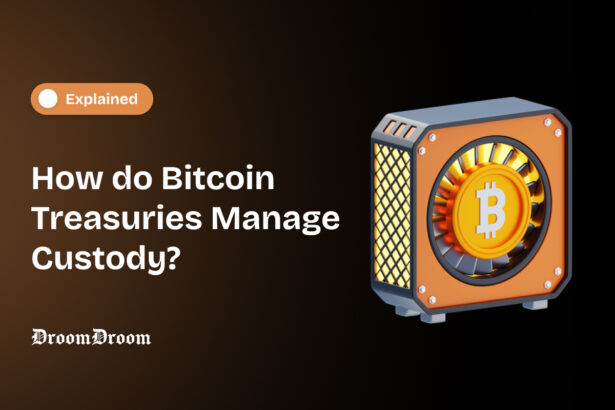Custody is one of the most critical aspects of managing a treasury. Without proper custody, all the BTC inside a Bitcoin Treasury lies at the mercy of hackers and exploiters. As crypto-related cyber attacks become more sophisticated and complicated, the Bitcoin Treasuries, too, have managed to up their game.
In this article, we will comparatively illustrate the two most popular models of custody used by Bitcoin Treasuries and the funds that use them. The next half of the article will cover the different tools and technologies at the disposal of these Bitcoin Treasuries.
Crypto Custodians
Crypto Custodians are companies that specialize in holding cryptocurrencies for institutions like exchanges, funds, personal portfolios, and others.
These companies have the technological understanding and real-world situations to deal with the usual as well as special circumstances like security breaches.
Some well-known crypto custodians include Coinbase Custody, BitGo, Gemini Custody, Anchorage Digital, and Cobo Custody.
Nearly all Bitcoin ETF Treasuries like BlackRock, VanEck, Fidelity, and others have partnered with a crypto custodian to secure their holdings.
Self Custody
Self-custody via institutional-grade solutions is also common among Bitcoin Treasuries with known users like Bhutanese Government (Druk Holdings), Riot Platforms, Marathon Digital Holdings, etc.
These solutions provide full control over the holdings, and this control is immune from any censorship or government actions. However, the risk of theft remains large.
Self-custody is done via solutions like multi-sig wallets, smart wallets, and node-based Bitcoin accounts. All of these solutions are described in detail in the next section.
Lost your crypto? Steps to Safeguard and Retrieve Assets
Types of Storage Used for Institutional Custody
Institutional grade custody is similar to retail custodial solutions; however, the security in the former is multi-layered, has much higher encryption, and oftentimes even a dedicated team to monitor the solutions in real time.
Deep Storage or Crypto Vaults
Deep Storage solutions are often employed by Bitcoin Treasuries because the bulk of their holdings never leave the treasury. As a result, a high percentage of BTC in them are slated for deep sleep, a term used to refer to keeping the keys offline for an extended period of time.
The vault used in this section refers to the strength of the security apparatus and not any physical vault.
At this point, it is important to reiterate that all Bitcoins are stored in the Bitcoin blockchain and only the private keys (i.e., the passwords) are stored inside wallets and vaults.
Multi-Signature Wallets
Multi-Signature wallets are activated only when the required number of people, each having their unique key, sign the transaction (at least 2). This solution not only ensures prevention of arbitrary transfers but also secures the asset in case one of the keys is compromised.
A number of hacks including the Mt. Gox Bitcoin hack (850k BTC lost) would have been prevented had there been a multi-sig wallet.
Though there have been instances where multi-sig wallets are drained, yet those are less frequent than others.
Also Read: The Evolution of Multisignature Security for Cross-Chain Transactions
Smart Account Wallets
Smart Account Wallets are those wallets that have an active smart contract controlling the wallet. As a result of this smart contract, an additional and automated layer of security is added to the treasury.
However, these wallets are also susceptible to hacks ,as in the case of ByBit, although the error was mostly human.
Node Addresses
Node Addresses are one of the most secure addresses and are associated with full Bitcoin nodes or mining accounts. Each miner in Bitcoin has their own node wallet where the mining reward gets deposited.
Here are some other benefits associated with running a Bitcoin Node.
https://twitter.com/BitsagaRob/status/1934564976309481538
Anyone can create a node wallet with any decent computer. Users can choose to run a full node or a light node, depending on their hardware requirements.
However, running a node is often difficult due to the complexities associated with setting it up.
Asset Insurance
Sometimes, not even the best of security can provide 100% coverage. Here, the age-old insurance provides a cushion to the treasury in case they are compromised.
For the extreme situations, institutions like Bitcoin Treasuries do insure their assets so that in case they are drained, they would have some assets to pay back their customers.
Such insurance is provided by companies like Avertas, Canoplus, Coincover, etc.
https://twitter.com/cryptocom/status/1937866124042899709
Typically, the cost of insuring your asset is 0.5% of the total insured value.
Do you know? Risk Management Strategies Used by Bitcoin Treasuries




















